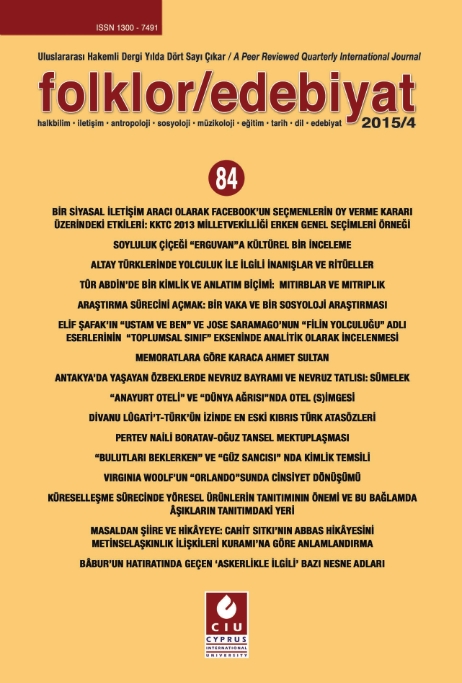Elif Şafak’in “Ustam Ve Ben” Ve Jose Saramago’nun “Filin Yolculuğu” Adli Eserlerinin “Toplumsal Sinif” Ekseninde Analitik Olarak İncelenmesi
Analytical Research of Elif Şafak’s “My Master and I” and Jose Saramago’s “Elephant’s Jorurney” in the Line of “Social Class”
Author(s): Ali Gülkekin, Onay OrcanSubject(s): Turkish Literature, Culture and social structure , Social differentiation, Sociology of Culture
Published by: Uluslararası Kıbrıs Üniversitesi
Keywords: My Master and I; Elephant’s Journey; Social Class;
Summary/Abstract: People live together in order to be able to satisfy their needs and dominate to the nature. There is an interaction between individuals and groups which is generated by individuals. Individual is a part of the communal living, communal living is the part of the individual too. In that case, the phenomenon of social class which involves sociable relationship and social communication between people exists throughout history. In this sense, we aim to reveal the concept of social class how is reflected in both works which own different languages and cultures but occur in the same century. In this study, Elif Şafak’s “My Master and I” and Jose Saramago’s “Elephant’s Journey” is evaluated within the framework of pluralistic survey method. The concept of the social class is based by this study while both books are evaluated. These books are addressed with an interdisciplinary approach in the light of sociological and historical knowledge. At the same time, this study is evaluated within the frame of science of comparative literature which aims to examine two works came from different languages in terms of issue, idea, and form; to exhibit the different, similar, and common aspects of productions; to interprete the reasons of similarities and discrepancies of works. The community which lives longer than human life is permanent and it is categorized according to various variables. Namely, social classes have not been disappeared, they have been continued through transfiguration. In the conclusion part of the study, we aim to determine the similarities and differences of classes in the Ottoman and Europe communities in centre of social stratification during 16th century before aspect of recent modern societies.
Journal: Folklor/Edebiyat
- Issue Year: 21/2015
- Issue No: 84
- Page Range: 83-92
- Page Count: 10
- Language: Turkish

